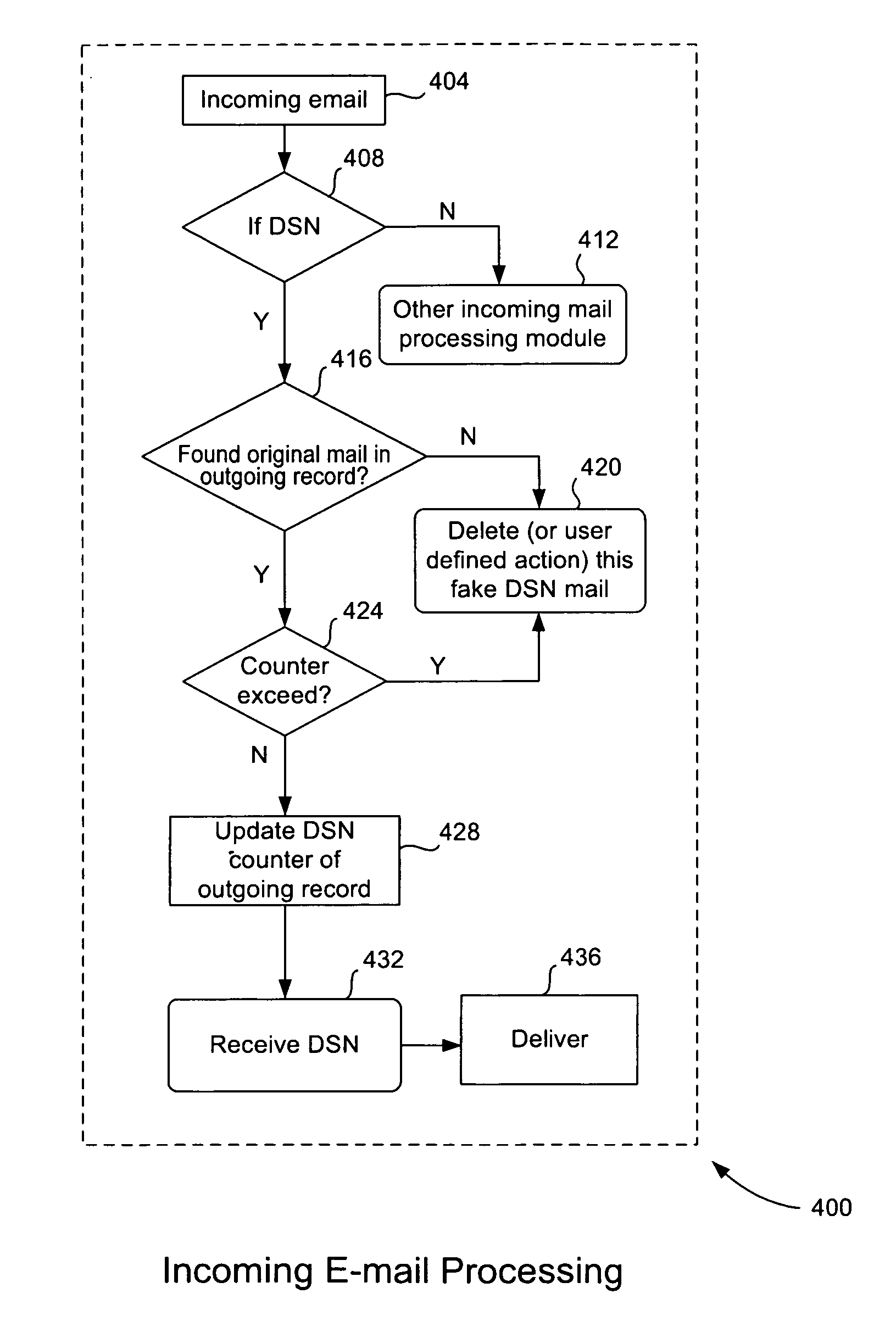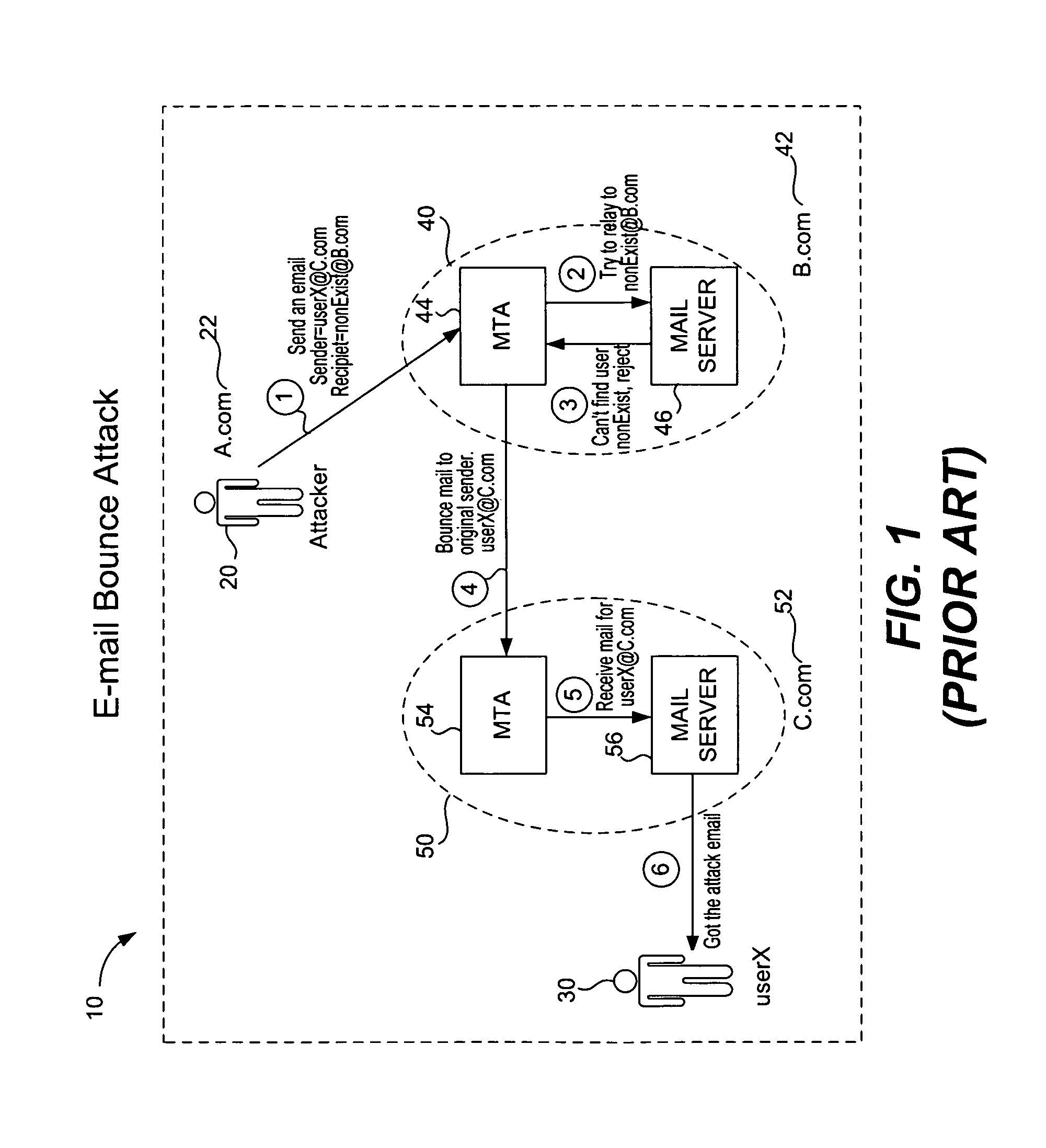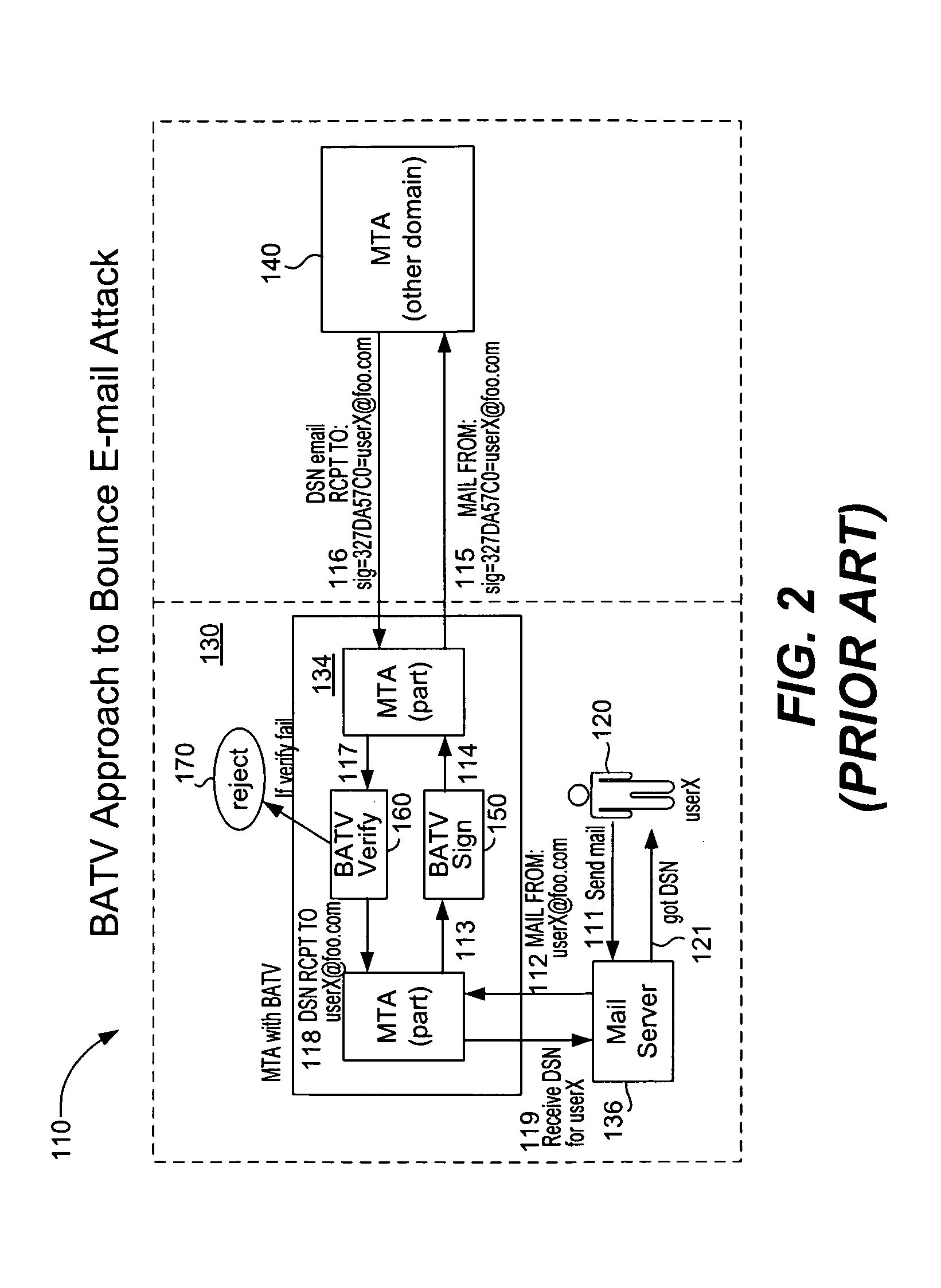Bounce attack prevention based on e-mail message tracking
a technology of e-mail message tracking and bounce attack, applied in the field of email spam prevention, can solve the problems of spam being a real economic burden on businesses, unscrupulous individuals and hackers resorted to mass mailings of advertisements, and loss of productivity
- Summary
- Abstract
- Description
- Claims
- Application Information
AI Technical Summary
Benefits of technology
Problems solved by technology
Method used
Image
Examples
Embodiment Construction
[0021]As described above, a bounce e-mail attack is disruptive and causes many problems for computer users and enterprises. In this type of attack, the attacker sends an e-mail message to a mail transfer agent with a faked sender address and a nonexistent recipient; the mail transfer agent then bounces a delivery status notification to an innocent user at the sender address who then becomes the victim.
[0022]One proposed approach to the e-mail bounce attack is known in the industry as the “bounce address tag validation” (BATV) method. Basically, this method determines whether the bounce sender address specified in an e-mail message is valid. Currently, this method is the subject of an IETF draft in the latest version was released May 21, 2008. It is not a mature standard but is a proposed solution that is still evolving. A review of this method and its disadvantages will be useful in understanding the advantages of the present invention.
[0023]FIG. 2 illustrates the BATV approach to a...
PUM
 Login to View More
Login to View More Abstract
Description
Claims
Application Information
 Login to View More
Login to View More - R&D
- Intellectual Property
- Life Sciences
- Materials
- Tech Scout
- Unparalleled Data Quality
- Higher Quality Content
- 60% Fewer Hallucinations
Browse by: Latest US Patents, China's latest patents, Technical Efficacy Thesaurus, Application Domain, Technology Topic, Popular Technical Reports.
© 2025 PatSnap. All rights reserved.Legal|Privacy policy|Modern Slavery Act Transparency Statement|Sitemap|About US| Contact US: help@patsnap.com



